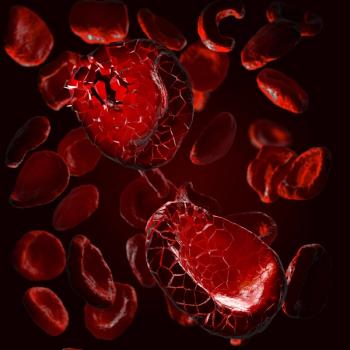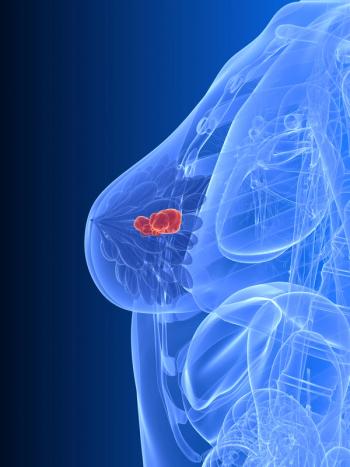
Evaluating the Viability of Antibody Drug Conjugates for Glioblastoma
While more work must be done to minimize toxicity, antibody-drug conjugates have demonstrated benefits for patients with glioblastoma.
The standard of care approval for glioblastoma was approved nearly 20 years ago, and it is time for new developments to be made, according to Sonia Jain, PhD.
At the 16th Annual World Antibody-Drug Conjugate (ADC) Summit in San Diego, CA, researchers, doctors, and scientists gathered to discuss the latest and most relevant topics pertaining to ADC development and data.
At the Summit, CancerNetwork® spoke with Jain, a postdoctoral fellow and research associate at the Mayo Clinic in Rochester, Minnesota following a seminar she presented titled, “Assessing Safety & PK Profiles of ADCs Against Glioblastoma to Understand Reasons for Observed Toxicity & Explore Mitigation Strategies”.
During the discussion, she discussed the current state of ADCs in the field, highlighting depatuxizumab mafodotin (ABT-414), ABBV-221, and ABBV-321 as notable EGFR-targeting ADCs. Additionally, she expressed hope for the future of ADCs in glioblastoma, stating that they make sense as a treatment for this population and should be further developed.
What was the rationale for your presentation assessing the safety and pharmacokinetic profiles of ADCs in glioblastoma?
Jain: In glioblastoma, half of the population has EGFR amplification. The ADC field—this work was started 5 to 7 years ago––at that time, an ADC developed by AbbVie was targeting EGFR and there were no good indicators of how pharmacokinetics looked in mice models. [The rationale] was to improve patient outcomes…which is not great as of now.
What is the importance of optimally assessing the PK and toxicity profiles of ADCs in glioblastoma?
ADCs make sense for glioblastoma. We have shown, using our models, that they improve survival by more than a year. Safety and PK profiles are [quite[ important if we are trying to administer these drugs to human populations so that we do not enter into unintended toxicity.
What are the 3 EGFR-targeting ADCs?
The 3 EGFR-targeting ADCs that I have tested have been in clinical trials. [Depatuxizumab mafodotin] has been the safest. [ABBV-221] and [ABBV-321] basically showed a bit of toxicity, and the trial was stopped in phase 1.
[Depatuxizumab mafodotin] performed well in the early clinical and pre-clinical phases, but it failed to provide overall survival in the phase 3 clinical trial. That's why it is not in the market. It's not benefiting patients. That's where our work most relies: what can we improve in future?
How do bystander activity and premature payload release considerations affect ADC development?
We desire to have bystander activity and [premature] payload release in the tumor microenvironment to take care of the heterogeneity of the tumor because all tumors are not the same. But at the same time, these are also contributing to toxicity, which we would like to limit. We want to have a balance of bystander [activity] and premature release of the payload to have efficacy [against] the tumor but no toxicity to the normal cells.
What are some critical pharmacokinetic parameters that are predictors of efficacy and tolerability of ADCs?
We would like to have a better handle on that, but currently, the field is growing, and we do not have great predictors. But it would be good to have stable enough ADCs to reach the tumor and release the payload. But in between this path, it [prematurely] releases the payload. That's where we see toxicity.
To optimize the bystander activity and therapeutic index of these ADCs against glioblastoma, which ADC changes are most important?
For glioblastoma, a major limitation is that if we are delivering it systemically into the blood, then it is not reaching the tumor because of the blood brain barrier. I think more advancement is needed. How can we cross that barrier? The second limitation is, do we have stable enough ADCs in [the] brain microenvironment, which are specifically targeting tumor cells and not affecting normal brain cells?
As EGFR is a known glioblastoma target, how do biomarker considerations affect the development of these ADCs?
EGFR is amplified in more than half of the [patients with glioblastoma]. But at the same time, it is [quite] heterogeneous. All [glioblastoma] cells do not express EGFR to a high level, and variants are co-present, along with wild type EGFR. Many variations are present. It is easy for resistance to develop; it does not matter if it is a small molecule or an ADC, because small molecules have failed for many years. Basically, if we can target EGFR with another target which is also expressed in [glioblastoma], that might make sense.
Looking towards the future, what new developments are most exciting for ADCs in glioblastoma?
I would like to see more ADCs that can be tested in glioblastoma, not only targeting EGFR, but other targets [as well]. Some of them we have also seen, like B7-H3 and EphA2. They are also highly expressed. Those ADCs—they are in clinical development pipelines for many companies—will be interesting to see. Also, different iterations of linkers and payloads to see which provides enough efficacy and enough bystander effect to balance the efficacy with toxicity.
What payloads are currently relevant for ADCs in glioblastoma?
So far, we have tested auristatin payloads, MMAE and MMAF. We have also tested…PBD [pyrrolobenzodiazepine] dimer. So PBD dimer is very toxic, and that is in line with other ADCs in clinic which have been seen. For auristatin MMAE and MMAF, MMAF comes with the non-cleavable linker, but it does not provide bystander activity, which is desirable. MMAE is found to be toxic. These are the only limited payloads that we have worked with so far. I would like to expand on this. Right now, the field is moving towards topoisomerase 1 inhibitors. I would also like to test those ADCs with topoisomerase inhibitors in [glioblastoma] and see how they behave.
Do you have any closing remarks?
The glioblastoma space has been neglected for so long [since] the standard of care was approved 20 years ago. There is a huge unmet need, and this is the time. Our data speaks for itself; ADCs make lot of sense and benefit [patients with glioblastoma]. If people [could] pay more attention and can test [a] bit more in [glioblastoma], we would be having a good future for the betterment of patients.
References
Jain S. Assessing safety & PK profiles of ADCs against glioblastoma to understand reasons for observed toxicity & explore mitigation strategies. Presented at the 2025 World Antibody Drug Conjugate Conference; San Diego, CA; November 3-6, 2025.
Newsletter
Stay up to date on recent advances in the multidisciplinary approach to cancer.





















































































